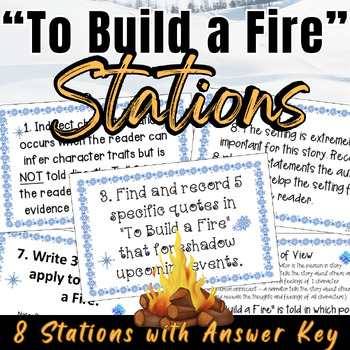To Build a Fire by Jack London Thinking Stations: Analyze & Synthesize
- Zip
Description
Looking for a new activity to supplement your "To Build a Fire" lessons? Try these thinking stations that require students to dig into the text, analyze, and synthesize in order to complete.
What's included . . .
► Teacher instruction sheet
► Bell Ringer
► 8 Station Tasks
► Detailed Answer Key
► Clean copy of "To Build a Fire" to use if needed in stations.
This activity challenges your students to think and examine text for direct and indirect characterization, plot, setting, diction, theme, figurative language, and foreshadowing.
❤️ Can adapt from a group to individual task.
❤️ Can use as sub plans.
❤️ Aligned with Common Core ELA Standards.
You might also like . . .
• "To Build a Fire" Unit - Jack London
• "To Build a Fire" by Jack London TEST
• "To Build a Fire" by Jack London Vocabulary
If you need an ENTIRE semester/year of American Literature lessons and activities, visit American Literature Full Course for stress-free planning at your fingertips!



